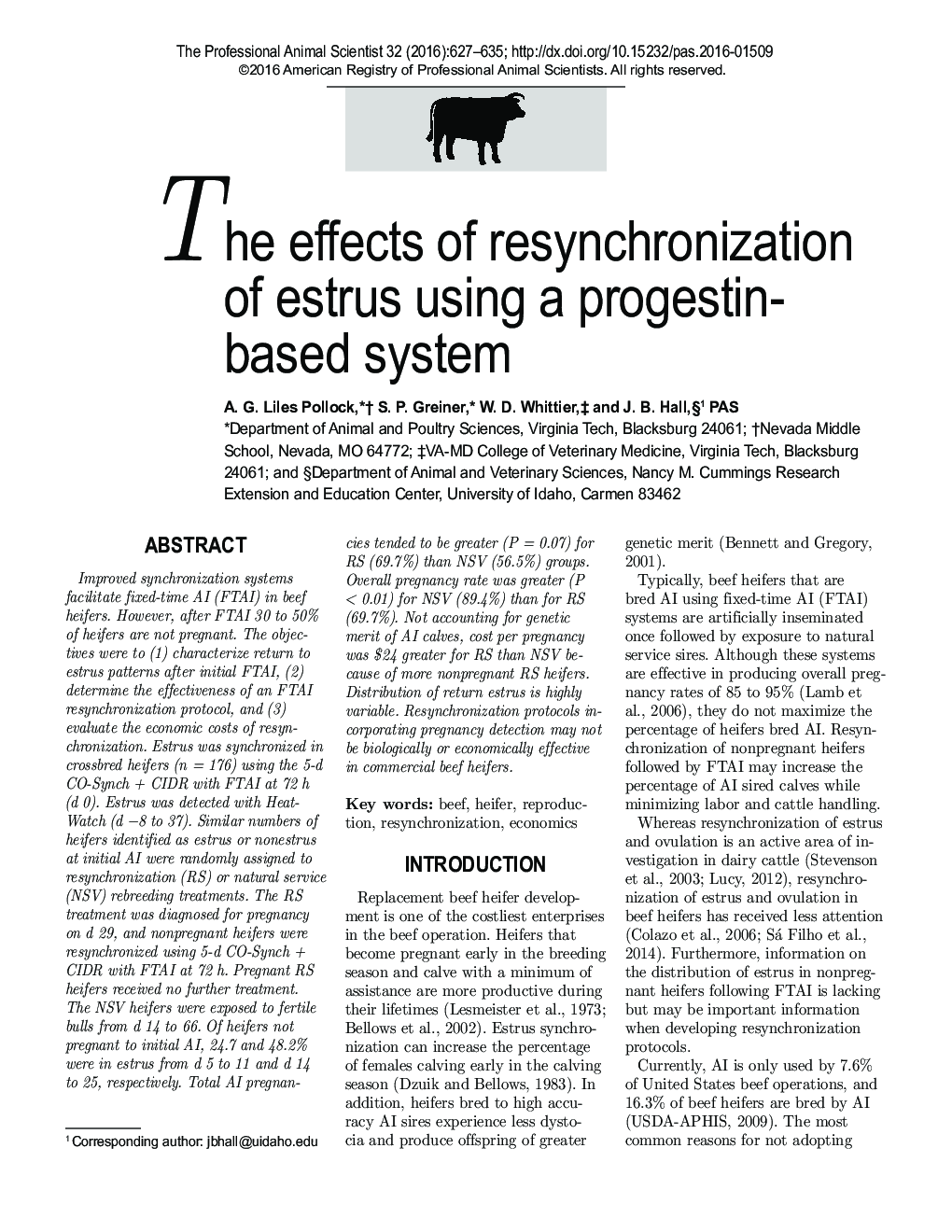| Article ID | Journal | Published Year | Pages | File Type |
|---|---|---|---|---|
| 8503831 | The Professional Animal Scientist | 2016 | 9 Pages |
Abstract
Improved synchronization systems facilitate fixed-time AI (FTAI) in beef heifers. However, after FTAI 30 to 50% of heifers are not pregnant. The objectives were to (1) characterize return to estrus patterns after initial FTAI, (2) determine the effectiveness of an FTAI resynchronization protocol, and (3) evaluate the economic costs of resynchronization. Estrus was synchronized in crossbred heifers (n = 176) using the 5-d CO-Synch + CIDR with FTAI at 72 h (d 0). Estrus was detected with HeatWatch (d â8 to 37). Similar numbers of heifers identified as estrus or nonestrus at initial AI were randomly assigned to resynchronization (RS) or natural service (NSV) rebreeding treatments. The RS treatment was diagnosed for pregnancy on d 29, and nonpregnant heifers were resynchronized using 5-d CO-Synch + CIDR with FTAI at 72 h. Pregnant RS heifers received no further treatment. The NSV heifers were exposed to fertile bulls from d 14 to 66. Of heifers not pregnant to initial AI, 24.7 and 48.2% were in estrus from d 5 to 11 and d 14 to 25, respectively. Total AI pregnancies tended to be greater (P = 0.07) for RS (69.7%) than NSV (56.5%) groups. Overall pregnancy rate was greater (P < 0.01) for NSV (89.4%) than for RS (69.7%). Not accounting for genetic merit of AI calves, cost per pregnancy was $24 greater for RS than NSV because of more nonpregnant RS heifers. Distribution of return estrus is highly variable. Resynchronization protocols incorporating pregnancy detection may not be biologically or economically effective in commercial beef heifers.
Related Topics
Life Sciences
Agricultural and Biological Sciences
Animal Science and Zoology
Authors
A.G. Liles Pollock, S.P. Greiner, W.D. Whittier, J.B. PAS,
